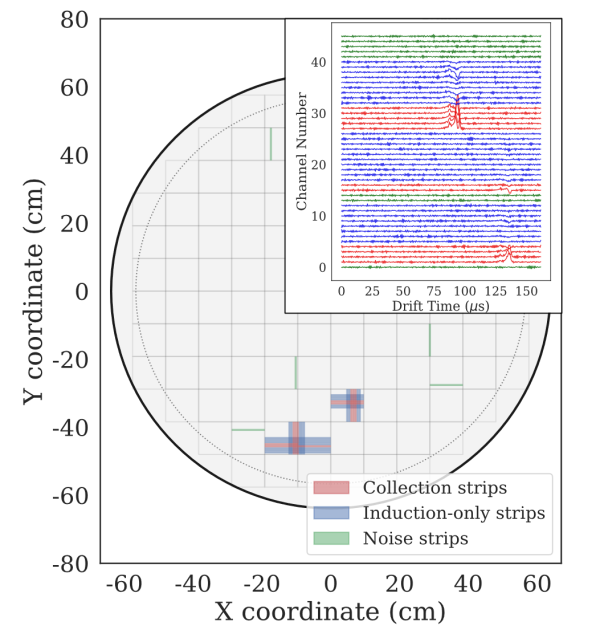Simulations and Analysis
Software tools for 0νββ

SLAC researchers are active in the development of software tools for the simulation and analysis of nEXO's data. Using realistic models of ionization and scintillation signals in the nEXO TPC, we develop algorithms for event reconstruction and perform statistical calculations to project nEXO’s sensitivity to 0νββ. Our work provides crucial inputs for optimizing the detector’s design.
Exploring new physics channels with nEXO data
Our group is also exploring ways to expand the scientific program of nEXO into new areas, particularly in particle astrophysics. Recently-discovered nuclear properties of the isotope 136Cs may enable nEXO to detect charged-current interactions of weakly-interacting particles with essentially zero background, possibly allowing us to achieve world-class sensitivity to solar neutrinos and certain classes of dark matter particles. For the former, nEXO may be the second experiment ever to observe the elusive CNO neutrinos, which provide a direct measurement of the abundance of heavy elements in the solar core – a key open question in stellar astrophysics. For the latter, our unique combination of isotopic composition and size could allow us to perform the most sensitive searches for specific dark matter candidates of any experiment to date.
In parallel with our nEXO efforts, we work on nuclear structure measurements to better understand the physics of charged-current interactions on 136Xe nuclei, and develop the simulation and analysis tools for the nEXO TPC that will enable this exciting science.
